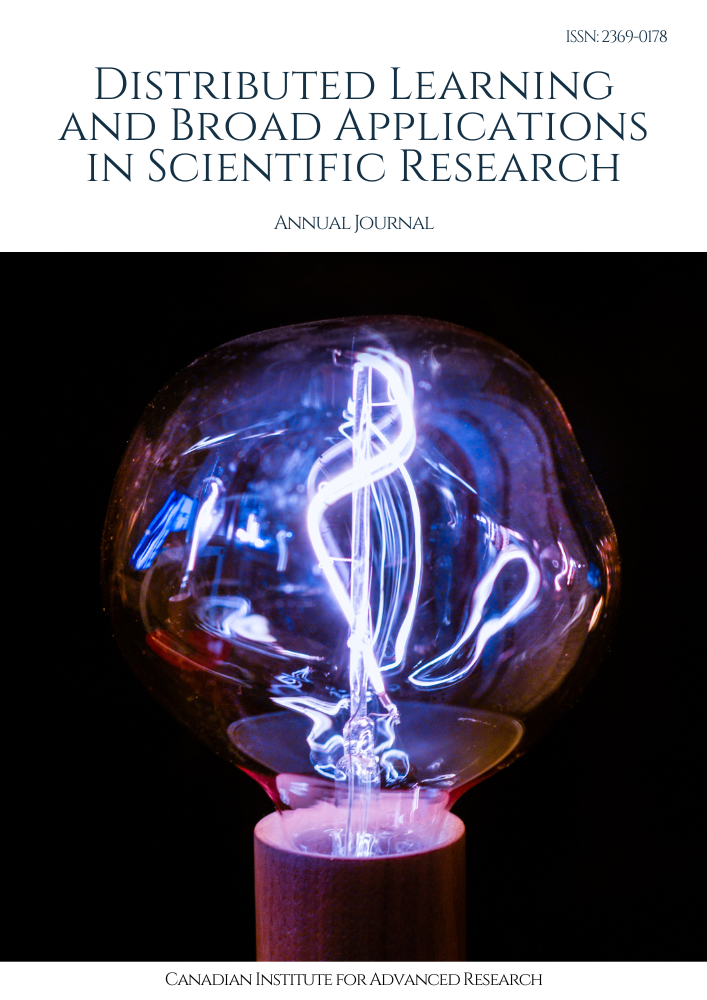Multi-modal Interaction - Integration Techniques: Investigating integration techniques for multi-modal interaction, combining inputs from different modalities such as voice, touch, and gesture
Keywords:
Multi-modal Interaction, User ContextAbstract
Multi-modal interaction (MMI) enables users to interact with computers using various input modalities, such as voice, touch, and gesture. This paper explores integration techniques for MMI, focusing on how different modalities can be combined to enhance user experience and interaction efficiency. We discuss key challenges, including modality fusion, synchronization, and user context recognition. Several integration strategies are reviewed, including parallel processing, sequential processing, and hierarchical processing. We also examine the impact of modalities on user engagement and task performance. This research provides insights into the design and implementation of effective multi-modal interaction systems.
Downloads
References
Sadhu, Ashok Kumar Reddy. "Enhancing Healthcare Data Security and User Convenience: An Exploration of Integrated Single Sign-On (SSO) and OAuth for Secure Patient Data Access within AWS GovCloud Environments." Hong Kong Journal of AI and Medicine 3.1 (2023): 100-116.
Tatineni, Sumanth. "Applying DevOps Practices for Quality and Reliability Improvement in Cloud-Based Systems." Technix international journal for engineering research (TIJER)10.11 (2023): 374-380.
Perumalsamy, Jegatheeswari, Manish Tomar, and Selvakumar Venkatasubbu. "Advanced Analytics in Actuarial Science: Leveraging Data for Innovative Product Development in Insurance." Journal of Science & Technology 4.3 (2023): 36-72.
Selvaraj, Amsa, Munivel Devan, and Kumaran Thirunavukkarasu. "AI-Driven Approaches for Test Data Generation in FinTech Applications: Enhancing Software Quality and Reliability." Journal of Artificial Intelligence Research and Applications 4.1 (2024): 397-429.
Katari, Monish, Selvakumar Venkatasubbu, and Gowrisankar Krishnamoorthy. "Integration of Artificial Intelligence for Real-Time Fault Detection in Semiconductor Packaging." Journal of Knowledge Learning and Science Technology ISSN: 2959-6386 (online) 2.3 (2023): 473-495.
Tatineni, Sumanth, and Naga Vikas Chakilam. "Integrating Artificial Intelligence with DevOps for Intelligent Infrastructure Management: Optimizing Resource Allocation and Performance in Cloud-Native Applications." Journal of Bioinformatics and Artificial Intelligence 4.1 (2024): 109-142.
Prakash, Sanjeev, et al. "Achieving regulatory compliance in cloud computing through ML." AIJMR-Advanced International Journal of Multidisciplinary Research 2.2 (2024).
Reddy, Sai Ganesh, et al. "Harnessing the Power of Generative Artificial Intelligence for Dynamic Content Personalization in Customer Relationship Management Systems: A Data-Driven Framework for Optimizing Customer Engagement and Experience." Journal of AI-Assisted Scientific Discovery 3.2 (2023): 379-395.
Makka, Arpan Khoresh Amit. “Integrating SAP Basis and Security: Enhancing Data Privacy and Communications Network Security”. Asian Journal of Multidisciplinary Research & Review, vol. 1, no. 2, Nov. 2020, pp. 131-69, https://ajmrr.org/journal/article/view/187.
Downloads
Published
Issue
Section
License

This work is licensed under a Creative Commons Attribution-NonCommercial-ShareAlike 4.0 International License.
License Terms
Ownership and Licensing:
Authors of research papers submitted to Distributed Learning and Broad Applications in Scientific Research retain the copyright of their work while granting the journal certain rights. Authors maintain ownership of the copyright and have granted the journal a right of first publication. Simultaneously, authors agree to license their research papers under the Creative Commons Attribution-NonCommercial-ShareAlike 4.0 International (CC BY-NC-SA 4.0) License.
License Permissions:
Under the CC BY-NC-SA 4.0 License, others are permitted to share and adapt the work, as long as proper attribution is given to the authors and acknowledgement is made of the initial publication in the journal. This license allows for the broad dissemination and utilization of research papers.
Additional Distribution Arrangements:
Authors are free to enter into separate contractual arrangements for the non-exclusive distribution of the journal's published version of the work. This may include posting the work to institutional repositories, publishing it in journals or books, or other forms of dissemination. In such cases, authors are requested to acknowledge the initial publication of the work in this journal.
Online Posting:
Authors are encouraged to share their work online, including in institutional repositories, disciplinary repositories, or on their personal websites. This permission applies both prior to and during the submission process to the journal. Online sharing enhances the visibility and accessibility of the research papers.
Responsibility and Liability:
Authors are responsible for ensuring that their research papers do not infringe upon the copyright, privacy, or other rights of any third party. Scientific Research Canada disclaims any liability or responsibility for any copyright infringement or violation of third-party rights in the research papers.
If you have any questions or concerns regarding these license terms, please contact us at editor@dlabi.org.



